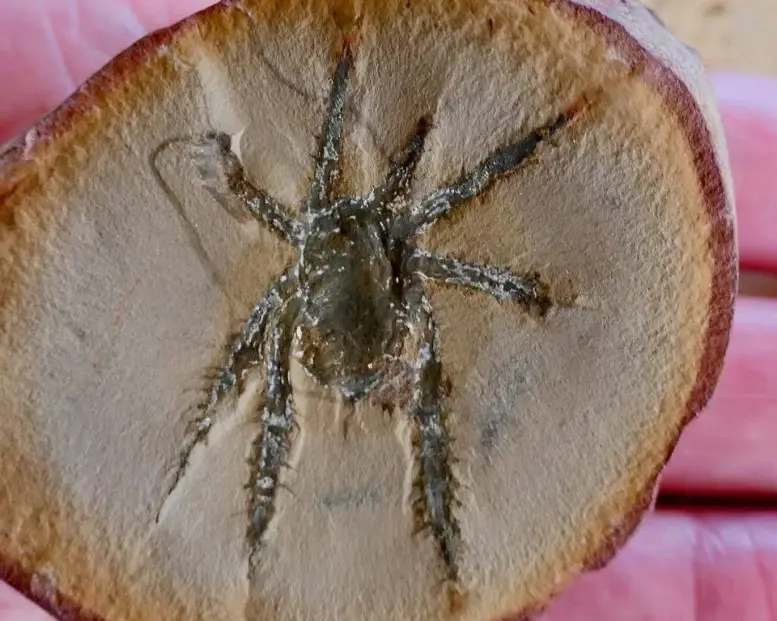Douglassarachne acanthopodaA 308-million-year-old spiny-legged arthropod was discovered in Mason Creek, Illinois. This unique species highlights the diversity of ancient spiders from the Carboniferous period, but its precise classification remains unclear.
More than 300 million years ago, all manner of arthropod species crawled through the coal forests of North America and Europe. These included familiar animals such as spiders, harvestmen, and scorpions, as well as exotic animals now found in warmer regions, such as whip spiders and whip scorpions.
But these habitats also contained some rather strange arthropods that belonged to groups that are now extinct. Even among these alien species that have now disappeared over time, it was possible to stand out with their armored legs. Recently, this ancient creature was described in a new article published in the journal. Journal of PaleontologyWritten by Paul Selden of the University of Kansas and the Natural History Museum, London, and Jason Dunlop of the Natural History Museum, Berlin.
“Douglassarachne acanthopoda “This fossil comes from the famous Mason Creek site in Illinois and is approximately 308 million years old,” said lead author Selden. “These compact arthropods had a body length of approximately 1.5 centimeters and are characterized by extremely strong and spiny legs, unlike any other known arthropod, living or extinct.”
Evolutionary significance and mystery
The KU researcher said carbon measurements are an important source of information for arthropod fossils because for the first time in Earth’s history, most living groups of arthropods were found together. However, the fauna was quite different from what it is today.
“Spiders were a fairly rare group at the time, known only from primitive lineages, and they shared these ecosystems with a variety of long-extinct arthropods,” said co-author Dunlop. ” Douglassarachne acanthopoda is a particularly striking example of one of these extinct forms. “The fossil’s very spiny legs resemble some modern harvestmen, but its body plan is very different from that of the harvestman or any other known arthropod.”
This led the two scientists to conclude that it did not belong to any known arthropods.
“Unfortunately, details such as mouthparts cannot be seen, making it difficult to tell exactly which group of arthropods are their closest relatives,” Selden said. “It may belong to a larger group that includes spiders, whip spiders and whip scorpions. Whatever their evolutionary relationships, these spiny arthropods appear to date back to a time when arthropods were experimenting with different body plans. Some disappeared later, perhaps during the so-called “Carboniferous Rainforest Collapse” shortly after the Mason Creek Period, when coal forests began to fragment and die. Or did these strange spiders persist until the end of the mass extinction in the Permian period?
According to the team, the Mason Creek fossil is one of the most important windows into Late Carboniferous life, revealing a wide variety of fascinating plants and animals. The current fossil was discovered in clay-reinforced concrete by Bob Masek in the 1980s and was later acquired by the David and Sandra Douglass Collection and displayed at the Museum of Prehistoric Life.
“The genus name Douglasarachne is in recognition of the Douglass family, who donated the specimen to the Museum of Natural History in Chicago for scientific study when it became clear that it represented an undescribed species,” Dunlop said. said. “Acanthoda, then, refers to the unique and characteristic spiny legs of an animal.”
Source: Port Altele
